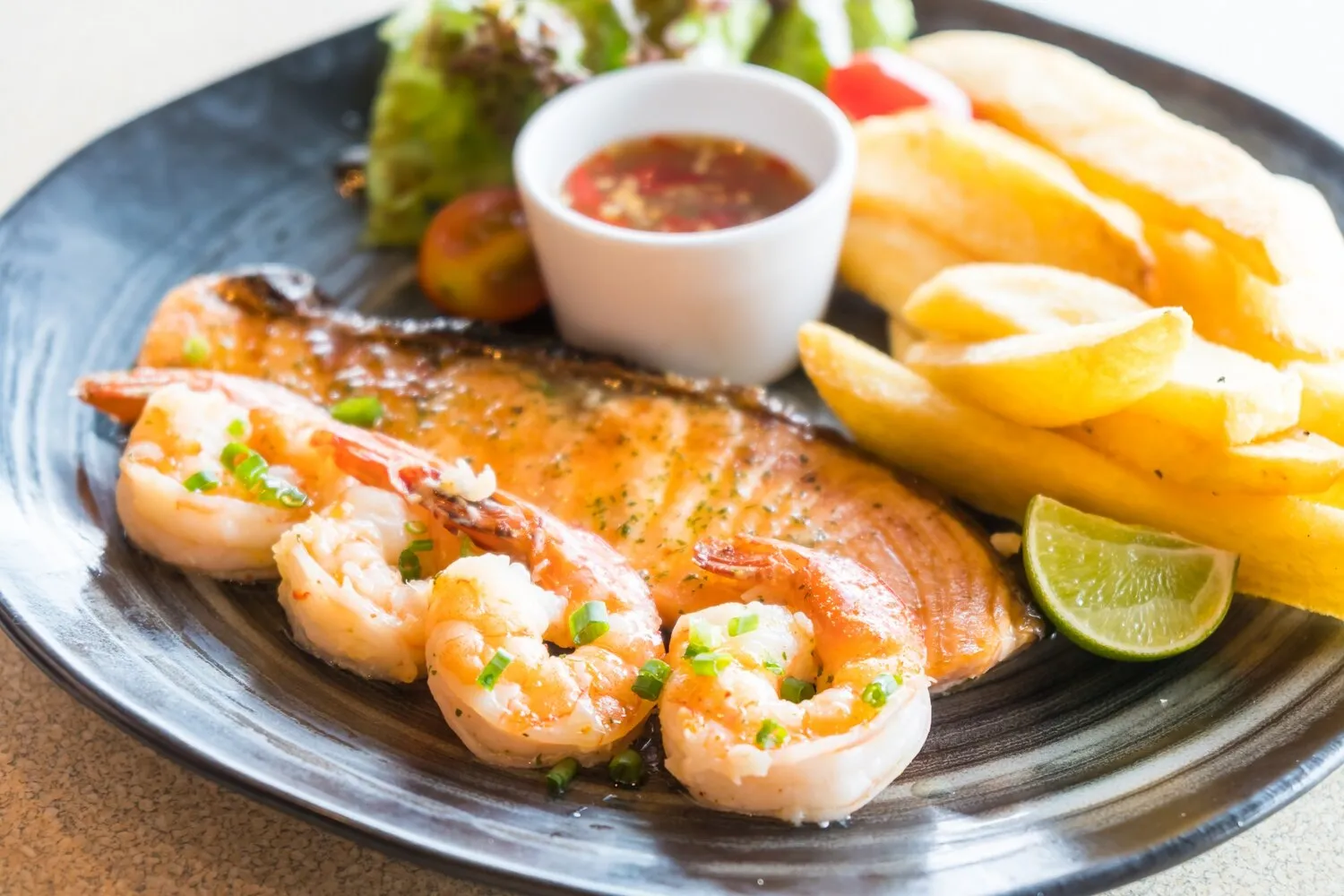
Pescado (Fish)
Similar to seafood, fresh fish dishes are probably also a highlight.
Nutrition Facts
* The % Daily Value (DV) tells you how much a nutrient in a serving of food contributes to a daily diet. 2,000 calories a day is used for general nutrition advice.
Fresh fish dishes boast a history as old as humanity's connection to the sea and rivers. Coastal and lakeside communities worldwide have relied on fish as a primary food source for millennia. Different regions developed unique techniques for catching, preparing, and preserving fish, leading to a vast array of culinary traditions. Trade routes also played a crucial role in introducing new spices and cooking methods, further diversifying fish preparations.
Fish holds significant cultural importance in many societies, often symbolizing prosperity, abundance, and good fortune. Fishing traditions are deeply ingrained in coastal communities, and fish dishes are frequently featured in celebrations and religious ceremonies.
Religious Symbolism
In some cultures, fish has religious significance. For example, the Ichthys (fish symbol) is an early symbol of Christianity.
Coastal Lifestyles
Many coastal cultures revolve around fishing, with specific techniques and traditions passed down through generations. Fish preparation is often a communal activity.
Regional Variations
Different regions have their own unique pescado dishes, reflecting the locally available fish and traditional cooking methods. These dishes are often a source of regional pride and identity.
Festive Meals
Fish is often served during special occasions and celebrations, signifying abundance and good fortune. Some cultures have specific fish dishes associated with particular holidays.
The flavor profile of pescado dishes varies widely depending on the type of fish, cooking method, and accompanying ingredients. Generally, the focus is on highlighting the natural freshness and delicate taste of the fish itself.
Common flavors include salty (from the sea or added salt), citrusy (lemon, lime, orange are common), herbal (dill, parsley, cilantro are frequently used), spicy (chili peppers in many cultures), and savory (from garlic, onions, and other aromatics). Oily fish like salmon or mackerel have a richer, more pronounced flavor than milder white fish like cod or tilapia. Cooking methods such as grilling, baking, frying, and steaming impart distinct flavors and textures.
Freshness is Key
Choose fish with clear, bright eyes, firm flesh, and a fresh, sea-like smell. Avoid fish that smells overly fishy or ammonia-like.
Proper Storage
Store fresh fish in the refrigerator on ice or in the coldest part of the refrigerator. Use it within one to two days.
Don't Overcook
Fish is delicate and can easily become dry and tough if overcooked. Cook until the flesh is opaque and flakes easily with a fork.
Acidic Marinades
Acidic marinades (lemon juice, vinegar) can help to tenderize fish and add flavor, but don't marinate for too long, as the acid can start to 'cook' the fish.
Pairing Suggestions
Fish pairs well with a variety of flavors, including citrus, herbs, spices, vegetables, and grains. Consider the type of fish and the cooking method when selecting accompaniments.
Explore additional Fresh dishes and restaurants
Explore FreshDiscover top dining spots and culinary experiences in Elx.
Explore ElxLearn more about the food culture, restaurant scene, and culinary heritage of Spain.
Explore Spain